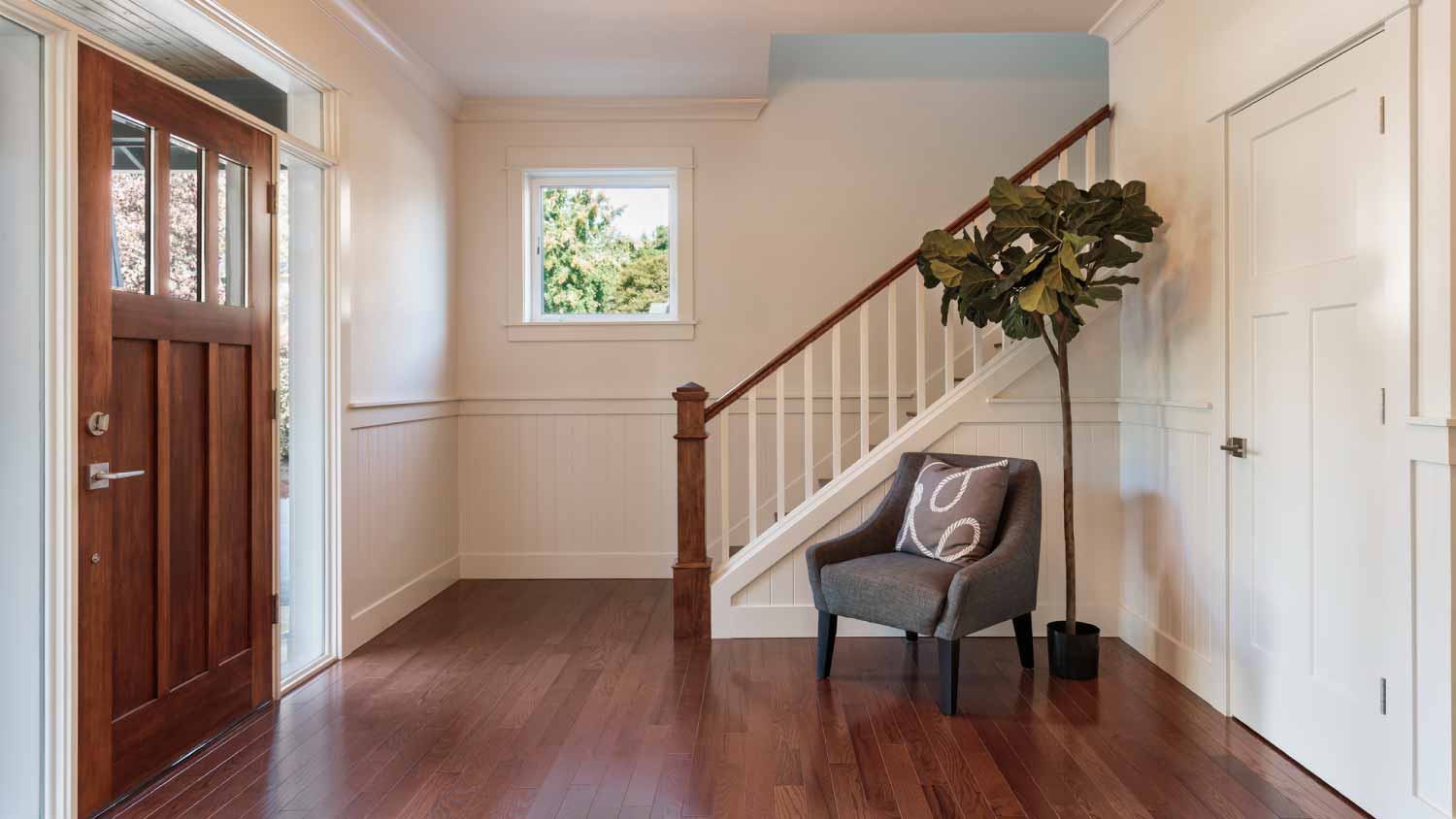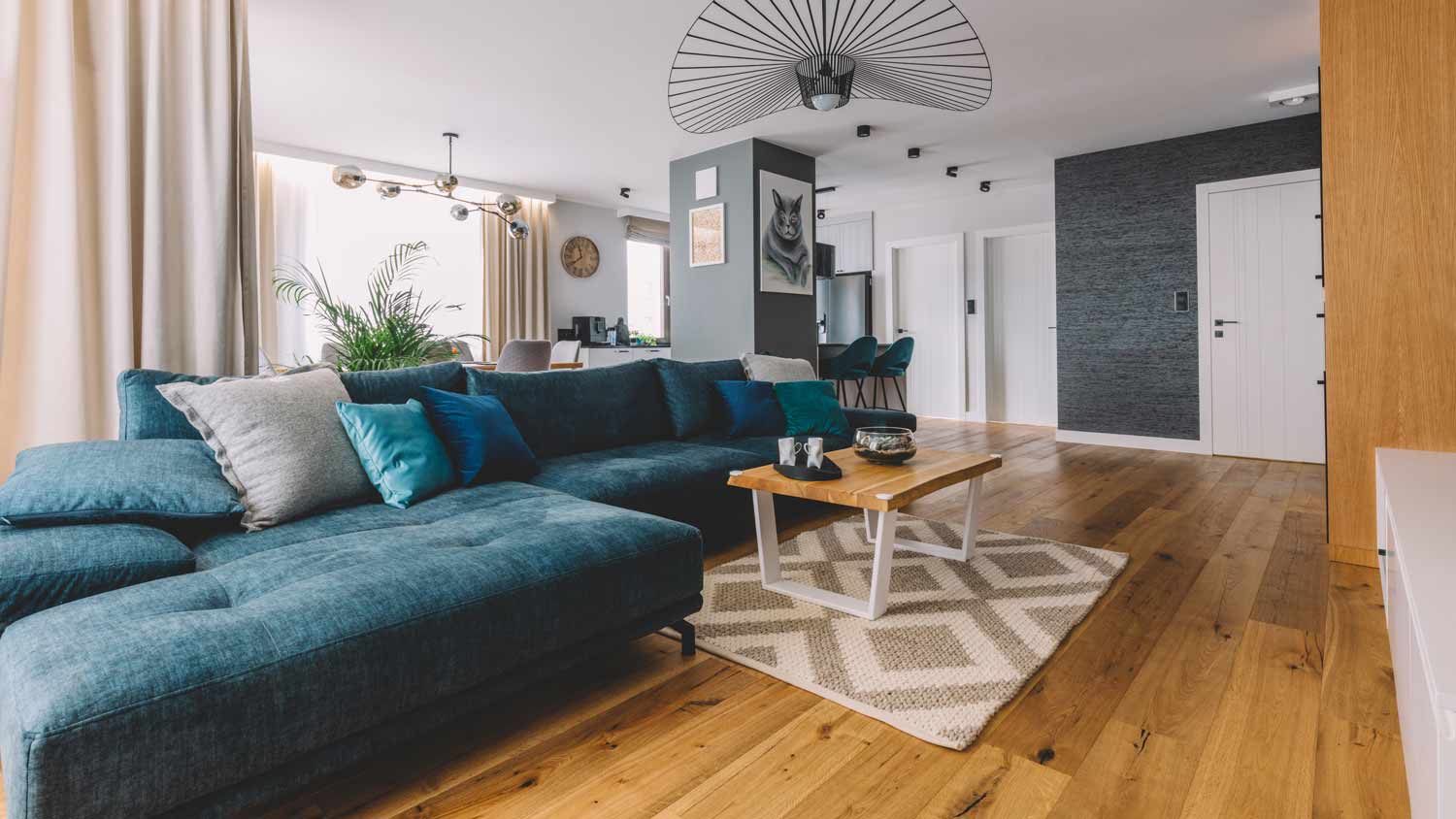All About Marmoleum Flooring
Marmoleum is the (not new) and improved linoleum flooring that homeowners are loving for its versatility and durability


Maybe you’re looking to develop a more sustainable home, or maybe you’re having trouble finding the right low-maintenance flooring for your next home revamp. Introducing: Marmoleum. Although its moniker sounds similar to the classic linoleum flooring, it’s a bit different. Marmoleum flooring is known for being sourced from raw materials, durable, and available in several different styles. Let’s take a look at what makes Marmoleum flooring worth the hype.
What is Marmoleum Made Of?
Marmoleum is made from raw materials. But what does that actually mean? Unlike other types of flooring that are made from synthetic materials, Marmoleum is made with a combination of linseed oil, which is derived from flax seeds, wood flour, and jute, a natural fiber often used to make floor coverings.
How is Marmoleum Made?
To create this special type of flooring, flax plants grow linseed, which is harvested and pressed before producing the oil. Manufacturers then heat the linseed oil and mix it with rosin (the solid form of resin) to create a linoleum cement.
Afterward, they add natural pigments such as wood, saw dust, and limestone, which creates a variety of colors. The colored sheets are pressed onto a jute backing before a water-based finish is applied, which maintains its color and helps keep the product clean.
Marmoleum vs. Linoleum
Technically, Marmoleum is linoleum. Marmoleum is a type of linoleum flooring, but it’s the newer kid on the block. Both flooring options are made from linseed oil, but there are several key differences.
One major difference between these types of flooring is that they contain different materials. While linoleum is made from linseed oil plus materials such as cork, dust, and wood flour, Marmoleum is made from linseed oil plus natural pigments and byproducts of harvested wood.
Marmoleum and linoleum installation methods also vary. Marmoleum is available in sheets and planks, which are installed using a variety of adhesives, depending on the floor’s location in the home, the amount of intended foot traffic, and the moisture content of the room.
Homeowners can also use Marmoleum Click, which is a floating-floor system that “clicks” into place without the use of adhesives. On the other hand, linoleum flooring is typically installed using solvent-free adhesives, although there are alternative methods such as stapling.
What are the Benefits of Marmoleum Flooring?

If you’re considering adding Marmoleum flooring to your home, it’s critical that you understand the full scope of its benefits and drawbacks before hiring a pro to install it for you.
Metal-Free Materials
First off, Marmoleum does not contain heavy metals, such as cadmium and calcium, or volatile organic compounds (VOCs), which can cause health issues ranging from nausea to organ damage. Volatile organic compounds (VOCs) are forms of gas that are emitted from solids and liquids, and they are found in vinyl and synthetic carpets.
Reduces Dust
Marmoleum’s smooth, even surface reduces the presence of dust mites and various allergens, earning it the “Seal of Approval” from Allergy UK. Marmoleum even contains antibacterial properties, which ward off microorganisms.
Versatile
Marmoleum is available in a wide range of colors and patterns, with several border options. Homeowners can customize their Marmoleum flooring to match their design aesthetic or other types of flooring in the house.
Easy To Clean
Marmoleum is finished with Topshield, which is a water-based finish mixed with urethane. This finish provides Marmoleum with a strong coat of protectant, and consequently, your Marmoleum flooring will not need further initial cleaning.
To clean Marmoleum flooring, homeowners should use a pH neutral all-purpose floor cleaner. To use, put this cleaner on a cloth and lightly dab onto scratches, blemishes, and scuffs. It’s essential that you only use the recommended cleaning solutions and avoid hot water or steam cleaners.
What are the Drawbacks of Marmoleum Flooring?
Here are the drawbacks to consider when looking at this new flooring option:
Requires Maintenance
While cleaning this type of floor is easy, maintenance is required to ensure the floor’s longevity. Marmoleum is prone to stains, so it’s important to wipe up any spills as soon as possible, which reduces the chance of staining. To prevent denting or scuffing the Marmoleum, avoid wearing spiked heels when walking on the floor.
Pet Accidents Can Leave Stains
If you’re a pet owner, take precaution with your Marmoleum flooring, as pet accidents can result in stubborn stains on your new flooring.
What Does It Cost To Install Marmoleum Flooring?
On average, Marmoleum flooring costs $3 to $7 per square foot, not including labor and supplies. In total, the cost to install Marmoleum flooring typically runs somewhere between $500 and $2,000.
In order for this type of flooring to properly acclimate itself to the room, the Marmoleum will need to be left in that space for about 24 to 48 hours prior to installation. This allows the material to properly adapt to the room’s temperature and moisture level.
DIY vs. Hiring a Professional
Whether or not you should hire a professional to install Marmoleum flooring depends on the extent of the project. Some Marmoleum flooring options will require special adhesive or marmoleum sheets. For these types, you should hire a local flooring contractor.
If you choose to hire a professional, you can expect to pay around $36 per hour for labor, or $0.25 to $1 per square foot. If you’re in an area with a higher living cost, these prices may increase.
The two factors that influence the final project cost will be project size and subfloor conditions. A smaller project may be more pricey since the professional will be covering travel, supplies and tools, insurance, and other costs. If your floors are rotted or need some type of repairs, that will likely drive the final price up, too.

.jpg?impolicy=leadImage)

















